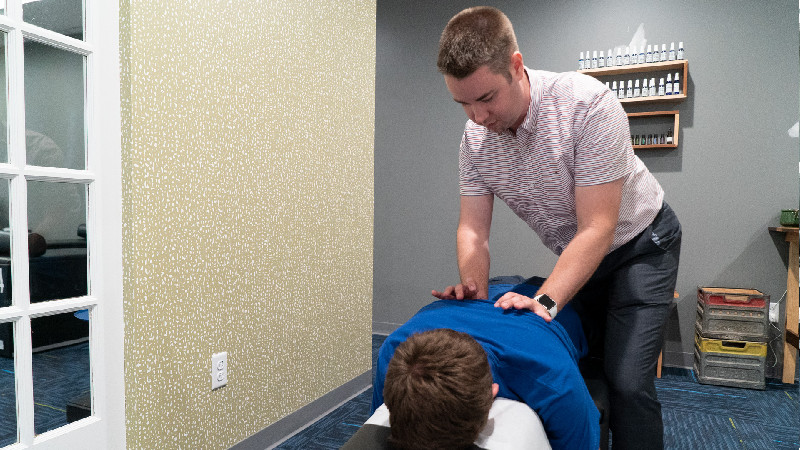Back pain is one of the most common health concerns affecting individuals of all ages, especially for those in physically demanding jobs or who lead an active lifestyle. Traditional treatments, such as surgery, have been the go-to solution for many who struggle with severe back pain or conditions like herniated discs. However, spinal decompression therapy is emerging as a safer, non-invasive alternative to back surgery.
What is Spinal Decompression Therapy?
Spinal decompression therapy is a non-surgical, mechanical traction treatment aimed at relieving pressure on the spinal discs. It is used to treat a variety of back-related issues, including herniated discs, degenerative disc disease, sciatica, and spinal stenosis. The therapy works by gently stretching the spine, which helps create negative pressure in the discs. This negative pressure can help reduce the bulging or herniation of discs and promote the reabsorption of any herniated material, alleviating pressure on nerves.
This process not only alleviates pain but also encourages the movement of oxygen, water, and nutrients into the discs, promoting the natural healing of the damaged tissue.
Traditional Back Surgery: An Invasive Option
Traditional back surgery, such as discectomy or spinal fusion, is often considered when non-invasive treatments fail to relieve chronic back pain. These procedures involve surgically removing part of a herniated disc or fusing two or more vertebrae together to stabilize the spine.
While surgery may be effective in some cases, it comes with risks and requires a significant recovery period. Common risks associated with back surgery include:
- Infection: As with any surgical procedure, there is always the risk of infection.
- Blood clots: Surgery can lead to the formation of blood clots, which can be dangerous.
- Nerve damage: While surgery aims to relieve nerve pressure, there is a risk of inadvertently damaging the surrounding nerves.
- Long recovery times: Even with successful surgery, the recovery period can be lengthy, sometimes lasting several months.
Given these risks, many people are turning to non-surgical treatments, such as spinal decompression therapy, as a safer and less invasive alternative.
How Spinal Decompression Therapy Compares to Back Surgery
Non-invasive vs. Invasive
One of the most significant advantages of spinal decompression therapy over traditional back surgery is that it is non-invasive. This means there are no cuts, stitches, or recovery periods involved. Spinal decompression therapy involves the use of a motorized table to gently stretch the spine, creating the negative pressure needed to relieve pain and promote healing.
In contrast, back surgery requires an incision and the removal of tissue or bone. The invasive nature of surgery increases the likelihood of complications and requires significant downtime for healing.
Lower Risk of Complications
Since spinal decompression therapy is non-invasive, it carries far fewer risks than surgery. There is no need for anesthesia, and the treatment is generally well-tolerated by most patients. Side effects are rare but may include mild soreness or discomfort after treatment, similar to the feeling you might experience after a workout.
Back surgery, on the other hand, is associated with several potential complications, including infection, blood clots, and nerve damage, as mentioned earlier. These risks can significantly impact a patient’s quality of life during recovery.
Shorter Recovery Time
Another significant benefit of spinal decompression therapy is the minimal recovery time. Most patients are able to return to their daily activities immediately after their session. Spinal decompression therapy is usually performed as part of a comprehensive treatment plan, which may include chiropractic adjustments and other non-invasive therapies.
In contrast, traditional back surgery often requires a long recovery period, with some patients needing weeks or even months before they can return to normal activities. During this time, they may need physical therapy to regain strength and mobility.
Cost-Effective Treatment
Spinal decompression therapy is generally more cost-effective than back surgery. Surgery often requires expensive hospital stays, follow-up visits, and rehabilitation costs. Spinal decompression therapy is typically more affordable and requires fewer visits, making it an attractive option for those looking to avoid the high costs associated with surgery.
Effective for Many Conditions
Spinal decompression therapy has been shown to be effective for treating a variety of back issues, including:
- Herniated discs: By relieving pressure on the discs, spinal decompression can help reduce bulging or herniated disc material, alleviating pain and pressure on the nerves.
- Degenerative disc disease: This condition occurs when the spinal discs lose hydration and elasticity, leading to pain and stiffness. Spinal decompression can improve hydration and promote healing.
- Sciatica: By alleviating pressure on the sciatic nerve, spinal decompression therapy can help reduce the pain, tingling, and numbness associated with sciatica.
- Spinal stenosis: This condition involves the narrowing of the spinal canal, leading to nerve compression. Spinal decompression therapy can help open up space in the spine and relieve pressure on the nerves.
Long-Term Benefits
While spinal decompression therapy provides immediate pain relief for many patients, it also offers long-term benefits. The therapy helps to promote natural healing by improving blood flow, rehydrating the discs, and restoring proper spinal alignment. Many patients find that they experience lasting pain relief after a series of treatments.
Why Spinal Decompression Therapy is a Safer Alternative for Gresham Residents
For those in Gresham, OR, seeking effective pain relief for back conditions, spinal decompression therapy offers a safer, non-invasive alternative to traditional back surgery. It is a well-tolerated treatment that provides long-term relief for many common back issues without the risks and recovery time associated with surgery. Whether you’re dealing with a herniated disc, sciatica, or other spinal conditions, spinal decompression therapy may be the solution you’ve been looking for.
If you’re considering spinal decompression therapy for your back pain, it’s important to consult with a reliable chiropractor who can assess your condition and help you determine if this therapy is right for you. For more information, visit Aspire Chiropractic and schedule your consultation today.


